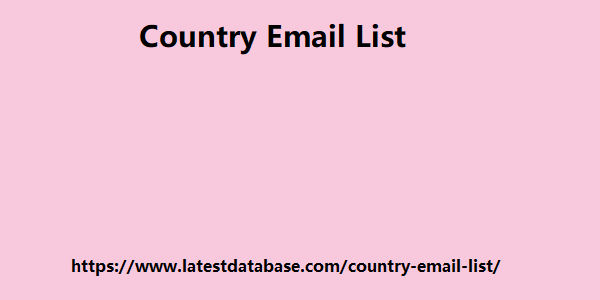We make our way through about 3 billion disposable cups
Mar 6, 2024 23:43:08 GMT -6
Post by account_disabled on Mar 6, 2024 23:43:08 GMT -6
A year of which less than 1% of them are recycled, so this one change could have a huge impact on our planet. Rebecca burgess. City to sea has also organized a cross-industry working group addressing the issue of reusables during covid-19. The group has more than 20 organisations, including starbucks, the sustainable restaurant association and zero waste scotland. Plastic-free ppe elsewhere, a group of companies have come together to show that the healthcare profession does not have to turn to plastic when it comes to sourcing personal protective Country Email List equipment (ppe). Campaign group a plastic planet has been working with reelbrands and transcend packaging to create the world's first plastic-free visors used by frontline workers and medical staff. These are made with wood pulp and cardboard, they are recyclable and compostable at home. More than one million ppe visors are expected to be made each week. Yodel, a provider of delivery services to the nhs, has already placed an order. Meanwhile, a plastic planet is also working with terracycle to collect visors from trash bins to be recycled. It affects us all the pandemic has also made it difficult for individuals and businesses to avoid excessive plastic use. Even social media star lauren singer, who hasn't put any trash in the landfill in more than eight years, has had problems.
In an instagram message to her hundreds of thousands of followers, she admitted to stockpiling products in preparation for lockdown, many of which were packaged in plastic. But as the bnef analysis predicts, the current spike in plastic demand is likely to be temporary and should not affect circular economy goals. Time will tell if the general public will continue to pay more attention to public health and the benefits of plastic in protecting us against virus infection than to sustainability. Rebecca burgess. Meanwhile, 36% of people felt they had been forced to use more single-use plastic due to covid-19 and 70% of respondents did not change their feelings about plastic pollution, despite the lockdown.10 years ago, arizona muse made her big leap into the world of fashion. She was chosen by prada to open and close the italian luxury brand's flagship show in milan. Five years and countless photo shoots, runway shows and vogue magazine covers later, the british-american model has transitioned from the glamorous world of fashion to the somewhat disheveled world of environmental activism . I realized that I had no idea where the clothes I worked on came from, what they were made of, and who made them. Arizona muse. That epiphany caused the arizona-born ambassador for the likes of burberry , chanel and dior to become an enthusiastic student of sustainability. “I went on a mission to find out everything I could,” said muse, who after 5 years became a sustainability consultant for fashion brands, as well as an activist and model.

february, a month before the world health organization declared a covid-19 pandemic and the united kingdom, where muse is based, went into lockdown, he spearheaded a campaign for the climate movement extinction rebellion (xr). “the industry I love and represent is in crisis,” he said in a video for xr to encourage consumers to share, repair and rewear their clothes. "Every year, one hundred billion pieces of clothing are made, which take a terrible toll on the planet and the people who make them." “this happens because the people who buy them don't know it. But the industry knows it, and things are not getting better,” he said of an industry that produces 10% of man-made carbon emissions, and is the second largest consumer of the world's water supply. Muse recently sat down for an interview with eco-business about how they've been putting pressure on fashion brands to reduce their environmental impact and how to make climate change part of the covid-19 conversation. We share it with you! Interview with arizona muse what prompted your shift toward environmental activism? Five years into my career, I realized that I had no idea where the garments I worked on came from, what they were made of, and who made them.
